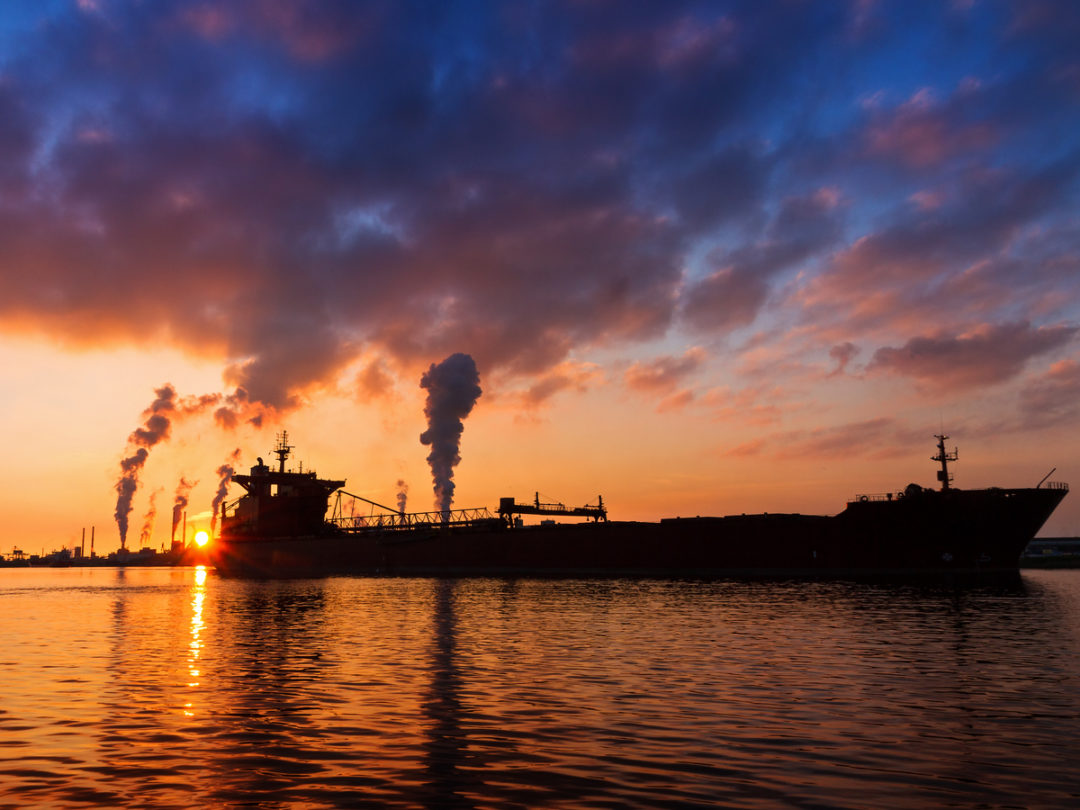
The world’s ocean shipping industry has announced bold targets for cutting vessel emissions within a relatively short period of time. But is it doing enough to reach that goal?
Ami Daniel doesn’t think so. He is chief executive and co-founder of Windward, a venture that applies artificial intelligence to maritime management. He suggests that ocean carriers have moved too slowly toward adopting stricter emissions caps.
To be sure, the International Maritime Organization (IMO), a United Nations Agency that oversees industry issues relating to safety, security, sustainability and legal matters, took drastic action on emissions on January 1, 2020. It ruled that vessels must slash the sulfur content of marine fuel oil from a maximum of 3.5% to just 0.5% as of that date. IMO set an even stricter limit of 0.1% for five designated emission-control areas: the Baltic Sea, North Sea, coastal areas off the U.S. and Canada, and the U.S.-controlled Caribbean Sea. IMO signatories can meet the new standards either by switching to low-sulfur fuel or liquid natural gas, or installing “scrubbers” that remove sulfur oxides from the gases emitted by ships’ engines.
The organization’s long-term target is to have cut the industry’s total greenhouse emissions by at least 50% by 2050. That sounds impressive, but Daniel notes that it took IMO some 30 years to agree to the stricter limits on sulfur. “Basically, he says, “the problem is that you have a bunch of people who don’t necessarily want to change.”
In the face of growing global awareness of the effects of climate change, shipping has no choice but to adapt now. And the IMO limits promise to have a big impact on total industrial emissions. The maritime sector is responsible for half the world’s fuel oil demand, and as much as 3% of its carbon emissions. That number is expected to rise to 10% by 2050, Daniel notes.
Further awareness of the maritime industry’s impact on the environment can be seen in the European Commission’s recent action to add ocean shipping to the EU’s Emissions Trading System. Launched in 2005, the ETS is reportedly the world’s first major mechanism for trading greenhouse gas emissions. It sets a progressively stricter cap on carbon from participating installations, and permits the purchase or receipt of emissions allowances that can then be traded among them. Now, vessel emissions will be factored into the ETS. At the same time, ships calling European ports will be required to conform to stricter limits on greenhouse gas generation.
A focus on fuel content isn’t the only way that ships can become greener, Daniel says. Another is to make better use of the data that’s available to them for calculating their total carbon footprint.
In the maritime sector, that’s not an easy number to arrive at. According to Daniel, 97% of a vessel’s emissions aren’t driven by the base specifications of ship design. They’re influenced by such variables as weather, speed, draft, water salinity and even barnacles on the hull that create drag. “It’s like driving a car,” he says. “You can drive wild or calmly. That will absolutely influence your carbon footprint.”
With the help of artificial intelligence, he says, carriers can model the complexity of real-world vessel operations and emissions on a global scale. The data can then be used for planning voyages that result in a lower carbon footprint, and therefore less of a need to buy carbon credits.
A.I. is uniquely qualified to process that huge amount of data, then output practical recommendations, Daniel says. Ultimately, it can lead to the design and deployment of more efficient vessels, drawing on computer-generated scenarios that simulate both oceanographic conditions and commercial constraints for a given voyage.
A.I. has only been applied to the problem of vessel operations for the last three or four years, Daniels notes. The advance coincides with the growing awareness of carriers of their critical role in meeting global sustainability targets. “Many customers tell us that they didn’t care about carbon emissions until recently,” Daniels says.
Have they woken up too late? The relatively short timelines dictated by IMO and other environmental organizations suggest that marine operators are scrambling to catch up with other industry sectors. Meanwhile, Daniel says, the technology for calculating actual vessel emissions and outputting workable options continues to evolve.
“This is the dark ages in terms of carbon,” he says. “We’re going from zero visibility to deep learning with 95% or better accuracy. But there’s a ton of room for improvement.”







